
| Krasilov |  |
| Link to Mayzlish
family photo page |
||||||||||
| Krasilov is the place where my father Gersh
Majzlish was born. In my childhood I did not have
grandparents, and I expressed little interest in that part
of my family tree. However my life and Krasilov are
tightly intertwined. Almost all of my summer school breaks
I spent there – far away from dusty city of Kharkov, where
my family lived prior and after the Second World War. As I
spent more and more time in Krasilov, I learned more about
my relatives. It is much later when the people of the
older generation passed away I felt the need to resurrect
the disappearing pages of my family’s history. Until now I
feel sorry that at the time I had not asked questions
which are very important for me and our descendants. My grandfather Ejnekh Majzlish according to some sources was not a Krasilov native. Instead he arrived there from the city of Zhitomir. He got married to Zelda Smolovsky, who was born in shtetl of Starokonstantinov. From that marriage they had 7 children: sons Munya, Suher, Gersh and Yojlek and daughters Ruhel, Haya, and Nusya (Nunechka). Most of the family’s members are seen here on 1926 photo. The family’s house was big and split into two parts: one half served as living quarters for the family while the other part was used as the family’s inn. It is believed that the establishment was kept very well. Maybe for that reason during the Russian Civil War the house served as headquarters for all the armies and armed groups which one after another occupied Krasilov. In addition, my grandfather was a lumber trader and achieved success in that. The family managed to survive despite the horrors of pogroms and the Civil War. However in 1931 during the “golden rush” campaign my grandfather along with the other male Jews was interrogated by the Secret Police (GPU) where he was demanded to surrender all the family’s gold for the purpose of financing of industrialization and farm collectivization. He did not survive the tortures and died. 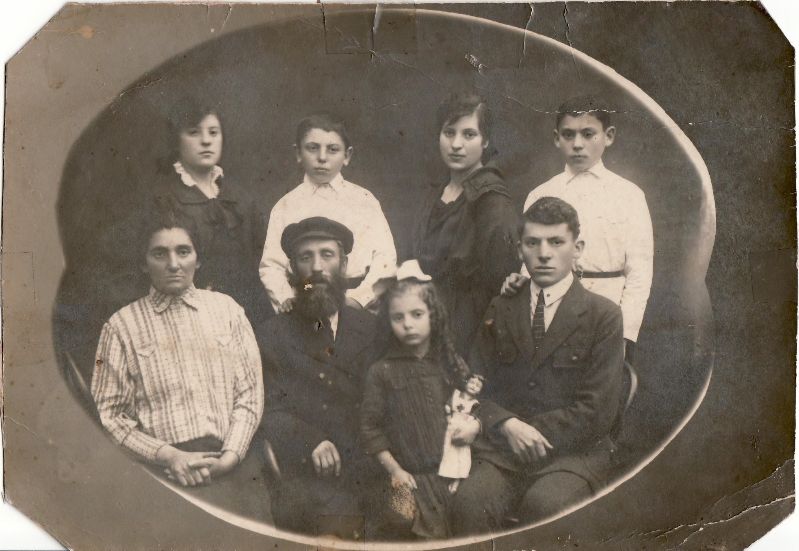 Mayzlish Family 1926 His oldest son Munya was born in 1897. According to my father, Munya was the most loved and respected in the family. He became the family’s pillar, but he died before having a chance to get married. 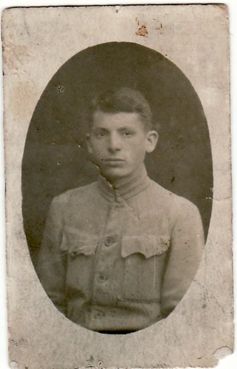 Munya The second oldest son Suher was born in 1900. He is missing on the family’s picture since he emigrated to the United States in the early 1920s. His road to the United States went through Argentina where he arrived when he was 23. I found his name on this site in the list of residents of Krasilov who emigrated. In 1923 he sent his photo from Argentina to his family. On that picture Suher (on the right) is shown with some other person from Krasilov. Evgeniya Sheinman has already published an interesting story about that photo on this site (link). Following his arrival to the United States Suher got married to Berta Sherman. They had two sons from that marriage. After the WW II being extremely concerned about the faith of the Soviet Jews, Suher managed to find us with the help of the Red Cross. Due to the total censorship existing in the Soviet Union at the time, the connection was rare and unreliable. However we received his and his son’s post-WW II photographs. Suher died in NY in 1975.
 Shaya and Ruhel Kogan
Haya was born in 1904. She got married prior to the WW II and had several children. Her family did not evacuate from Krasilov and after arrival of Germans they along with thousands of other Jews were killed in 1942. The mass grave where she was buried is in the village of Manivtsy, which is 25 km from Krasilov. 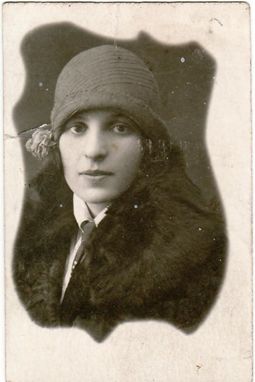 Haya My father Gersh was born in 1908. He finished heder, which he attended in Krasilov. In 1930 he moved to Kharkov, which was the capital of Ukraine from 1919 till 1934. There he worked as a construction worker building a machine-building factory. He survived Holodomor of 1932-1933. In 1939 he married Golda Zaen from Starokonstantinov. I was born in 1940. Due to the rapid advancement of the Germans during summer of 1941, the family evacuated from Kharkov to Kazakhstan. They returned to Kharkov in the end of 1946. In the fall of the same year my brother Mark was born. Gersh and Golda died in Kharkov – Gersh in September of 1989, and Golda in June of 1987. They are both buried in Kharkov on one of the city cemeteries, since the city had no Jewish cemeteries.
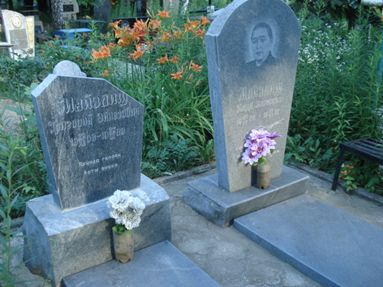 My parents’ graves in Kharkov Yolek (Lelya) was born in 1912. He finished heder and then worked for some period of time in Krasilov’s production workshops. Soon after that he started to work as a cashier in a bank. He’s been on that position till his retirement. In the summer of 1941, he evacuated with his bank to the city of Chirchik (Uzbekistan). Upon returning home to Krasilov he got married to Riva Averbukh, who came back from the war where she served as an army nurse. They also lived in his parents’ house. From that marriage they had a son and a daughter. Riva died in 1979 from cancer. She is buried in Khmelnitsky. Yolek emigrated to Israel in 1990 with his children. He died there in 1993.
Nusya was born in 1916. She was the youngest and most beloved child. She finished a 7 year school in Krasilov and went to Kharkov to advance her education. Her older brother Gersh at that time already was in Kharkov. After finishing a technical school Nusya went back home and started to work on a sugar refinery in Starokonstantinov. There she met her future husband Semjon Vaks. After their marriage they had their first child in 1939. Her mother (and my grandmother) Zelda later went to Starokonstantinov to provide help to her. After the war started Zelda was still in Starokonstantinov and died there after one of the Germans’ air raids. Nusya was planning to evacuate, but her husband made her stay put. He was convinced that the Germans would not commit any atrocities and would not prevent them from emigrating to the United States. It was a fatal delusion common for the Jews of the Russian “Settlement Strip” who survived the WW I. In the August of 1941, a ghetto for the Jews of that region was created, and later Nusya’s family was killed along with 12000 other Jews from the region. 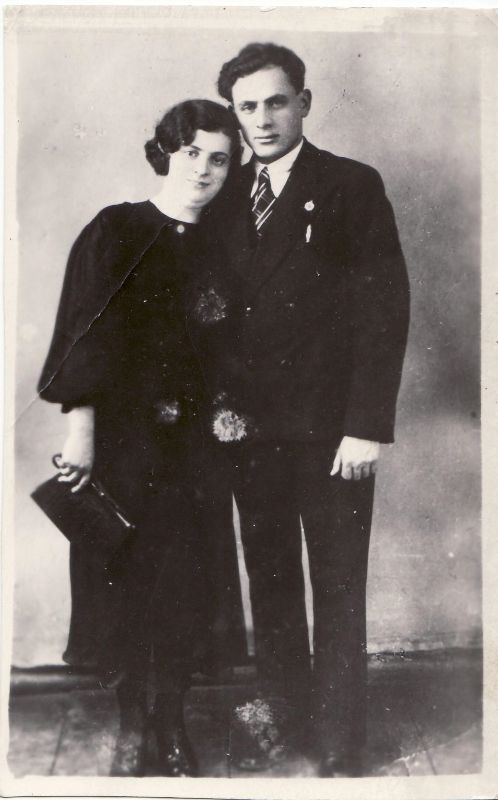 Nusya and Semjon These are the short stories about the lives of the members of my father’s family shown on the 1926 family photo. Who could have foreseen their future? In my photographic and childhood memory Krasilov remains a small shtetl with one story houses, dusty roads and noisy market. It’s quiet and ordinary life did not promise any fast or radical changes. Today however it’s a completely unrecognizable city with different population. But the city no longer has any Jewish residents and no traces of the previously rich Jewish life there. Nowadays it’s a part of Khmelnitsky oblast’ (region). |
||||||||||
| Return to Home Page |
Copyright © 2016 Barry Chernick |